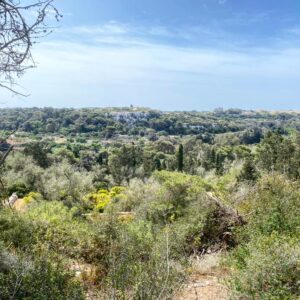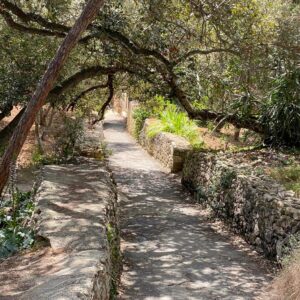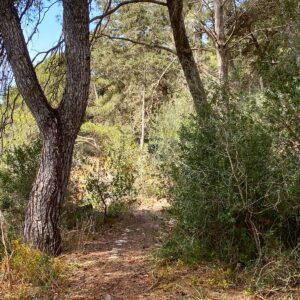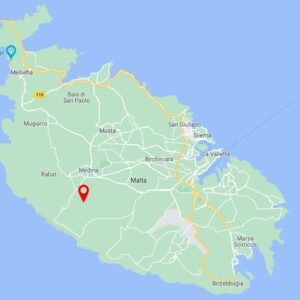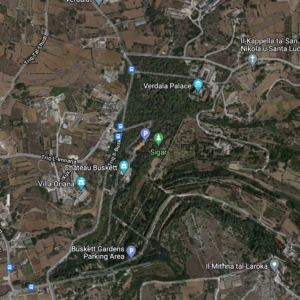Il-Buskett
Il-Buskett
Latitude and Longitude: 35.86075282578159, 14.398951163898316
Buskett was created together by various Grandmasters of the Order of Saint John in Malta by purchasing additional land, thus forming the largest and maybe the most important garden in the Maltese islands. From period manuscripts it clearly emerged that ‘il Boschetto’ Buskett gardens and its woodlands owe its first origins mainly to various Grandmasters of the Order of the Knights of St. John’s architectonic ambitions.
From period manuscripts it was established that Grandmaster de Vallette (1557-1568) was one of the first Grandmasters to commission a small hunting lodge. Other small structures mainly used as stables and stores were added from time to time with most of these structures attributed to have been commissioned by Grand Master Giovanni Paolo Lascaris (1636-1657). Therefore, one may point out that several projects commissioned by a number of Grandmasters contributed heavily to the transformation of this natural valley into a majestic Baroque garden.
The initial Baroque transformation can be attributed to Grand Master Lascaris’ great vision through his multitude of commissions, morphing his determination to imitate European Barque Garden building trends especially the newly built garden at Versailles. Amongst others the most fundamental transformation by Lascaris was the construction of an imposing Baroque stairway leading from the Verdala Palace to a straight walkway, linking the Palace directly to the Fontana and hence to the main gardens (still visible today).
During Lascaris tenure, a substantial amount of fruit and other decorative trees were planted. These helped creating the much-cherished Boschetto gardens alongside the existing Oak and Poplar woodlands. This transformation entailed also the construction of game enclosures, complex irrigation works, several complex water fountains and even large fish tanks. In this process Wied il-Luq was also extensively modified with its banks reinforced by dry stone and ashlar walls, converting the original valley into an artificial engineered water channel throughout all of Buskett, more or less, as it is known today. The water engineered water culverts and four farmhouses were recently restored to their former glory. However, a few buildings including several fountains were unfortunately known to have been dismantled during the British period to make way for the metal shed and additional tree planting areas.
Apart from the historic aspect of Buskett, this 47 hectare fully engineered garden and its woodland is also an important habitat for wood-associating species as well as for leaf-litter and for crypto fauna in general. These include a number of insects, woodlice and spiders which are only known at Buskett. Today Buskett is scheduled as a Natura 2000 site, both a Site of Community Importance (SCI) and a Special Protection Areas (SPA), therefore considered as being of National and European importance as this site has a concentration of Annex I habitats that is unparalleled in the Maltese Islands.


